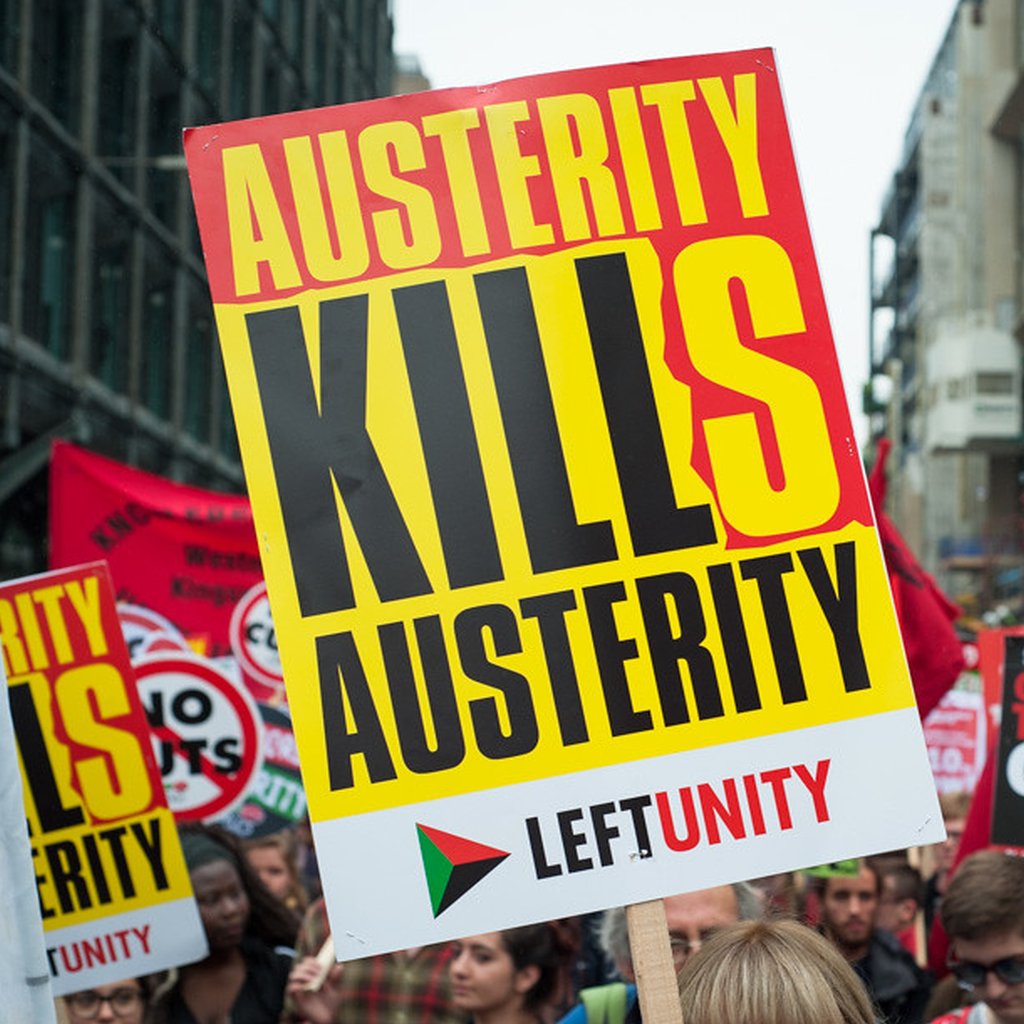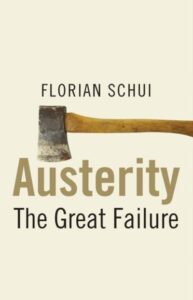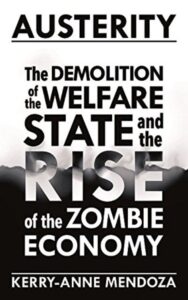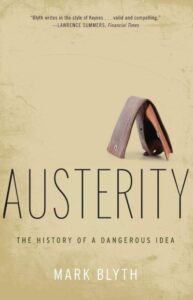Austerity is deliberate and manufactured by government. Austerity also kills. But economists have been aware of alternatives to austerity for nearly 50 years, that focus on people, and not financial markets.
- “There IS An Alternative To European Austerity: Modern Money Theory (MMT)” with Prof. Stephanie Kelton and Dr Michael Hudson
- “Fiscal austerity – there is another way” by Prof. William Mitchell
- “Modern money and the escape from austerity“, by Joe Guinan, Senior Fellow, U. Maryland, Renewal, Volume 22 Number 3-4 (2014)
About austerity
The website Investopedia tells us that:
“The term austerity refers to a set of economic policies that a government implements in order to control public sector debt. Governments put austerity measures in place when their public debt is so large that the risk of default .. austerity helps bring financial health back to government”.
In other words, governments can not pretend that they must undertake “hard decisions” to fight austerity, governments deliberately ensure that austerity happens, despite all the consequences it wreaks.
- Higher taxes (for rich and poor alike) take money out of the economy and makes austerity worse, and prevents growth: people do not have the money to spend.
- Tax cuts for the rich puts more money in their pocket, but they have no need to spend it. They don’t need yet another car, and they can’t go out to dinner any more than they do. Trickle down economics does not work (Arndt, 1983; Talbott 2011).
- Interest rate rises increase credit-card, loan and mortgage repayments, taking money away from people and making austerity worse.
- Higher energy costs take money away from people and businesses and makes austerity worse.
- Reducing public spending takes money out of the economy, reducing public services when people need them the most, and makes austerity worse.
None of this brings stability. It is no wonder that “the effectiveness of austerity remains a matter of sharp debate” (Infopedia quoting Wharton).
The Modern Money Theory (MMT) approach to austerity
MMT recognises that:
- Taxes do not fund government spending.
- Governments “do not have to save” or “find the money”. It is not like a household.
- Governments do not have a “National Debt” that requires paying off. It is not like your credit card.
- Government choose when and if it issues money by investing and spending it in the economy
The National Debt can never be paid off, as it is equal to the wealth and savings invested in the country. It is literally the money in our pocket, and savings in our bank account.
How can MMT address austerity?
MMT can address austerity simply by reversing those policies that make austerity worse. It does not need to “find” the money as the government is responsible for issuing it, just like it has for the last few hundred years.
- Cutting taxes puts more money in our pocket to spend. The economy works.
- Reducing interest rates makes our credit-card, loan and mortgage repayments more affordable, leaving more money in our pockets to spend. The economy works.
- Investing in clean, renewable energy will help drive down energy costs, and reduce the chance of supply problems in the future.
- Increasing public spending puts new money directly into people’s pockets that they can invest in their future
The catch?
MMT recognises that inflation is caused by supply issues. Lack of gas, petrol and toilet rolls (remember Covid), increases their cost. A lack of resources (employment, building materials, etc) increases their cost.
- Money is never in short supply.
- Resources are always limited.
Sources
- “Does Austerity Work? Or Does it Make Things Worse?“, Knowledge at Wharton Staff, Wharton University of Pennsylvania. (2015)
- “The “Trickle-down” Myth“, H. W. Arndt, Economic Development and Cultural ChangeVolume 32, Number 1, Oct., 1983
- Obamanomics: How Bottom-Up Economic Prosperity Will Replace Trickle-Down Economics, by John R. Talbott, Publ. Seven Stories Press, 2011, ISBN 9781609800680, 224 pages
Prof. Bill Mitchell on austerity and Modern Money Theory (1m 30s)




